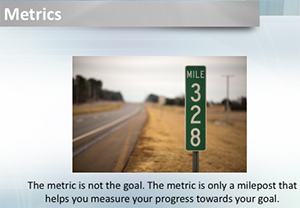SLAs and metrics are important, but they should not be substituted for business goals.
Sparked by recent discussions on Twitter and Facebook, it’s time to reprise some myth busting about metrics and Service Level Agreements (SLAs).
Prior to one of our recent conferences, I was contacted by an attendee who wanted to talk to me about how to increase First Call Resolution (FCR), very specifically, to 72 percent. I asked why this was important. The response wasn’t unexpected: “Because my manager says so.” That may seem like a good enough reason, but it isn’t.
FCR does measure how many times we are able to resolve issues quickly for our customers, but a high percentage of the resolutions are already known. We are repeating ourselves, and this type of repetition should either be moved to a customer-facing knowledge base or automated. FCR is also commonly “gamed” by analysts opening and closing a new ticket on a repeat issue rather than updating the old ticket if possible.
But without even going into that much detail, it’s important to understand the error of that manager’s ways. Metrics drive behavior. If we demand a particular number, we will generally get it, and the methods used to obtain that number should be suspect. The collapsed giant Enron was an object lesson (they were hitting all their quarterly numbers, after all), and recent events at Wells Fargo demonstrate the consequences of driving toward particular metrics.
Rather than pushing for “72 percent FCR,” that manager would be better served to push toward “Higher customer satisfaction through fast and accurate resolution.” That is a business goal. Measuring the number of fast and accurate resolutions serves the goal, not the other way around.

As for SLAs, we need to remember that what we are negotiating is a minimum acceptable level of service. When we hit “90 percent within SLA,” is that a good thing? Or does it mean we have set the bar too low? Let’s be realistic: No organization is going to make their goal 100 percent of the time; if they did, we’d certainly say that the goal is too easy, too low.
Unexpected events, such as major outages, can cause “call storms,” driving up wait times, slowing speed to answer and respond. There will be SLA breaches. It’s all a question of what the support center and the customers negotiate as providing the optimal level of service without having to spend a lot of additional money on staff and systems.
SLAs and metrics are very important, but they should not be substituted for business goals.









